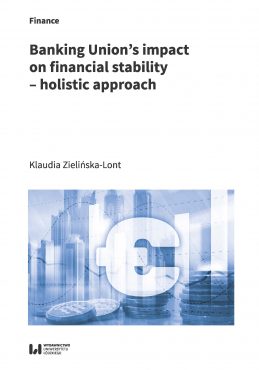Opis produktu
Prudential supervision of credit institutions in the European Union has for a long time been the responsibility of national bodies, even though this did not match the international character of the activities of many supervised banks. After the establishment of the banking union’s Single Supervisory Mechanism this has changed particularly for systemically important credit institutions, that now fall under the direct, coordinated supervision under the auspice of the European Central Bank.
There was a great deal of speculation around what changes the banking union would bring to the financial sector in Europe, yet the net impact of the Single Supervisory Mechanism on financial stability and competitive position of the supervised credit institutions remains largely unknown. This monograph presents a holistic analysis of the impact that the reform of the EU’s financial safety net had on the banking sector. To make such evaluation possible, a dedicated synthetic indicator was designed to quantify the net impact of harmonized prudential supervision on the stability of credit institutions. The results signal that the establishment of the Single Supervisory Mechanism was a success and that the proposed synthetic indicator can serve as an early warning tool for authorities tasked with safeguarding financial stability.
Komentarze
Table of contents
List of Acronyms 9
Introduction 11
Chapter 1. Financial stability and its safeguards 15
1.1. The definition of financial (in)stability in the literature 16
1.2. The financial safety net 19
1.3. Financial market supervision models 21
1.4. Micro- and macro-supervision models 24
1.5. Statutory and implied responsibilities of the central bank in terms of ensuring financial stability 26
1.5.1. The central bank’s involvement in financial market supervision 27
1.5.2. The central bank as a lender of last resort 30
1.6. The Basel Committee on Banking Supervision 31
Summary 36
Chapter 2. Creating a single EU financial market 39
2.1. Early steps towards financial market integration 40
2.2. EU regulations harmonising the financial markets until 2008 44
2.3. Early crisis response 51
2.4. Long-term solution proposals 53
2.5. Legislative changes – as of 2010 56
Summary 60
Chapter 3. The European Banking Union 63
3.1. The genesis of the banking union 64
3.2. The Single Supervisory Mechanism 66
3.3. The Single Resolution Mechanism 72
3.4. The European Deposit Insurance Scheme 79
Summary 83
Chapter 4. The impact of the banking union on the banking sector 85
4.1. Comparing research on the banking sector with the proposed method 85
4.2. Characteristics of the indicators selected for the study 88
4.2.1. Profitability indicators 90
4.2.2. Risk exposure indicators 92
4.2.3. Liquidity indicators 93
4.3. Constructing the synthetic indicator 94
4.4. The construction stages of the synthetic indicator 97
4.5. Study results 104
Summary 107
Conclusion 109
References 111
List of tables 131
List of figures 133
Komentarze



Opinie
Na razie brak recenzji produktów.